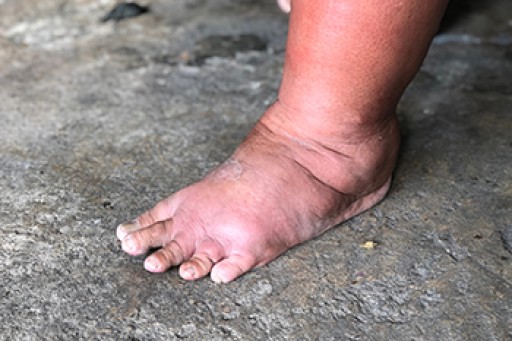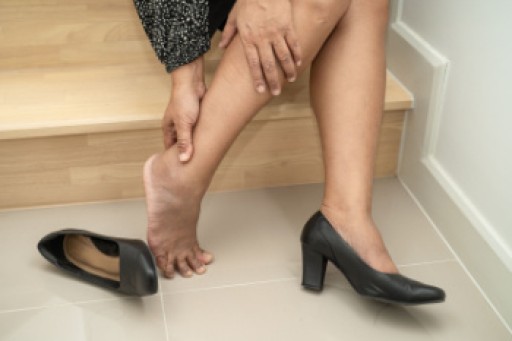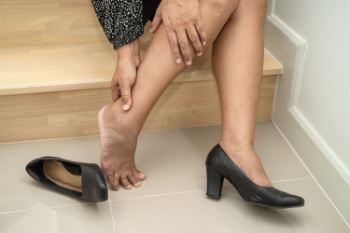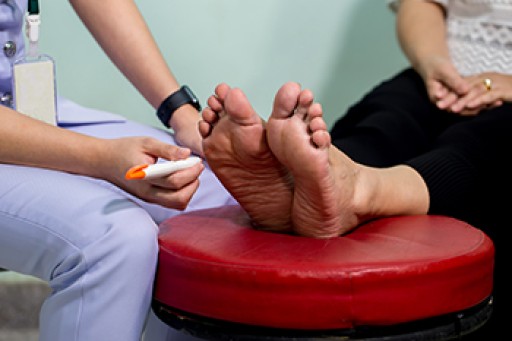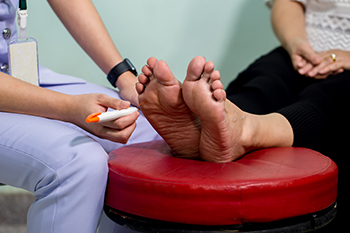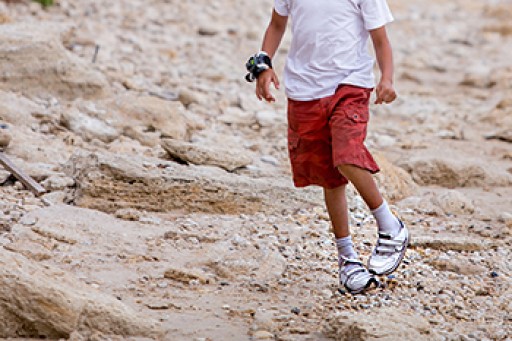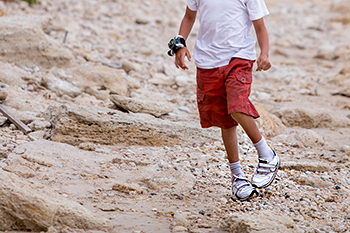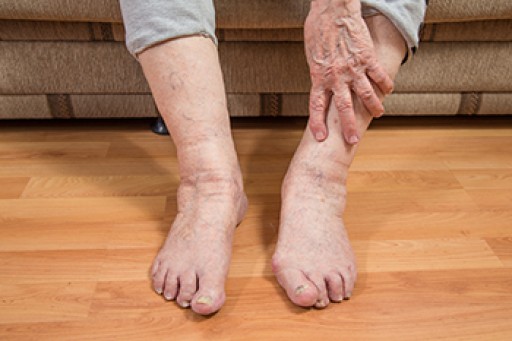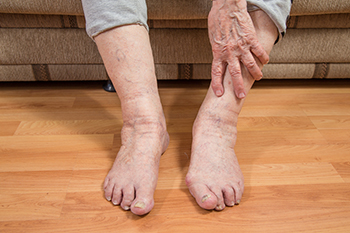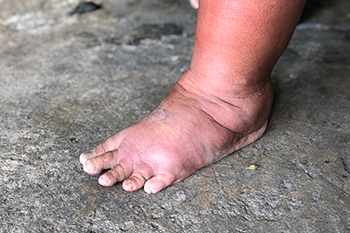
Understanding the causes of swollen feet, also known as edema, is important as this condition can signal other more serious ailments. Swelling of the feet is often accompanied by tenderness, pain, redness or warmth. In more severe cases, a decreased range of motion, difficulty breathing, and changes in skin color may occur. Injuries such as sprains and bruises frequently trigger swelling, as do infections like cellulitis. Chronic conditions like heart failure and kidney disease can lead to persistent edema, while pregnancy often causes swelling in the feet and ankles due to hormonal changes and increased blood volume. Allergic reactions and certain medications, like NSAIDs and steroids, can also induce swelling in the feet as a side effect. Treatment may include rest, elevation, compression therapy, medication adjustments, or medical interventions, such as drainage procedures or specialized footwear. If you are experiencing persistent swelling in the feet, it is suggested that you seek guidance from a podiatrist who can conduct an exam, identify the underlying cause, and recommend appropriate treatment.
Swollen feet can be a sign of an underlying condition. If you have any concerns, contact one of our podiatrists of Advanced Foot & Ankle Medical Center . Our doctors can provide the care you need to keep you pain-free and on your feet.
Swollen feet are a common ailment among pregnant women and people who stand or sit for extended periods. Aging may increase the possibility of swollen feet and patients who are obese often notice when their feet are swelling too. There may be medical reasons why swollen feet occur:
- Phlebitis - A condition that causes the veins to become inflamed and can also cause leg pain.
- Liver disease - This may lead to low blood levels of albumin which is a protein. This can cause fluid in the blood to pass into the tissues and several areas of the body can become swollen.
- Heart failure - When the heart doesn’t pump properly the blood that is normally pumped back to the heart can pool in the veins of the legs causing swollen feet.
- Kidney disease - One of the main functions of the kidneys is releasing excess fluid in the body. This type of condition can make it difficult for the kidneys to function properly, and as a result the feet may become swollen.
- Deep-vein thrombosis (DVT)- This is a serious condition where blood clots form in the veins of the legs. They can block the return of blood from the legs to the heart which may cause the feet to swell. It is important to be treated by a podiatrist if this condition is present.
Swollen feet can also be caused by bone and tendon conditions, including fractures, arthritis, and tendinitis. Additionally, there may be skin and toenail conditions and an infection may cause the feet to swell. Patients who take medicine to treat high blood pressure may be prone to getting swollen feet.
Many patients elevate their feet to help relieve the swelling and this is generally a temporary remedy. When a podiatrist is consulted the reason behind the swelling can be uncovered and subsequently treated.
If you have any questions please feel free to contact our office located in Thousand Oaks, CA . We offer the newest diagnostic tools and technology to treat your foot and ankle needs.
